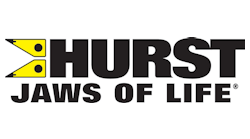Editor's note: Industry Insights are sponsored blogs submitted by manufacturers and suppliers serving the fire service industry.
We’re safer than ever before in our automobiles thanks to today’s high strength steels. It’s a fact appreciated by anyone who has ever been in an accident from which they easily walked away. In the event of more serious accident, those advanced steels can make patient extrication difficult for first responders, so it’s up to us – rescue tool manufacturers like HURST Jaws of Life – to stay ahead of the technology so our tools can help you get to your patient as quickly as possible.
With that in mind, we’re not designing tools for today; we’re designing tools for tomorrow’s needs and the increasingly stronger steel we’ll see. When hydraulic tools first came to the fire service in 1972, vehicle construction was roughly four percent high strength steel. Nine years ago, it was 12 percent. And it keeps growing. In fact, the FutureSteelVehicle (FSV) program, a three-year initiative concluding in 2013, developed fully engineered, steel-intensive designs for electrified vehicles.
We watch programs like FSV and work closely with OEMs, testing and re-testing our new and prototype tools against the cars of the future so we can develop tools of the future. In our quest to stay ahead, we know the strongest steel is located in essential areas where firefighters would make relief cuts or remove roofs or B-posts during rescues. This metal is more than twice as strong as what was used in many 2007 models (700 MPa vs. 1,500 MPa).
In fact, Advanced high strength steel (AHSS) is found in many new vehicles, and predictions theorize that by 2020 the third generation of AHSS will be 33 percent stronger than they are now. This jump in technology is faster than many expected, but fortunately we’re already creating tools that meet or exceed these demands.
For example, for wider diameter cuts, cutters need more force to be able cut and crush at the same time. HURST has four models that rise to this challenge: S 700E2, S 700, S 510 and JL-500.
Yet as we add power, we carefully watch details such as tool size, weight, maneuverability, battery life, speed and more. We look at materials and processes that allow us to advance design without sacrificing usability.
We keep three critical goals in mind when designing new tools:
- Power and capability – Tools need more brute force in both cutting and spreading to deal with the unprecedented metal strength.
- Speed – Rescues are increasingly requiring more relief cuts, so cycle speed and speed under load as well as fast deployment are critical.
- Innovation – Automotive steel technology is advancing faster than fire department budgets can address, so designing tools that reach further into the future is vital.
If you attended FDIC in 2016, you saw us demonstrate HURST Jaws of Life tools on these high strength steel areas on today’s cars. We’ll be bringing tool introductions and new learnings to FDIC this spring, as well, talking with you about what’s next in steel and what it takes to cut, bend and spread that steel.
It’s critical that we stay ahead of the curve, ensuring first responders have the tools they need to save lives. I truly believe that with our continued focus on developing tools with greater power and speed, we’re more than ready for what’s next.
BRUCE JOHNSTON has served as director of marketing and product management for HURST Jaws of Life® and its Jaws of Life, Vetter North America and Airshore rescue products since 2010. Johnston, who has more than 30 years of experience in sales and brand management, has overseen the launch of HURST’s next generation of rescue tools, including its game-changing eDRAULIC line of cordless battery-powered tools and StrongArm for fire and law enforcement. With responsibility over disciplines including market research and customer service, Johnston brings key insights on industry needs and first responder experiences to the HURST engineering team and works closely with product development to ensure HURST Jaws of Life meets or exceeds the demands of today’s tough rescue environment.







